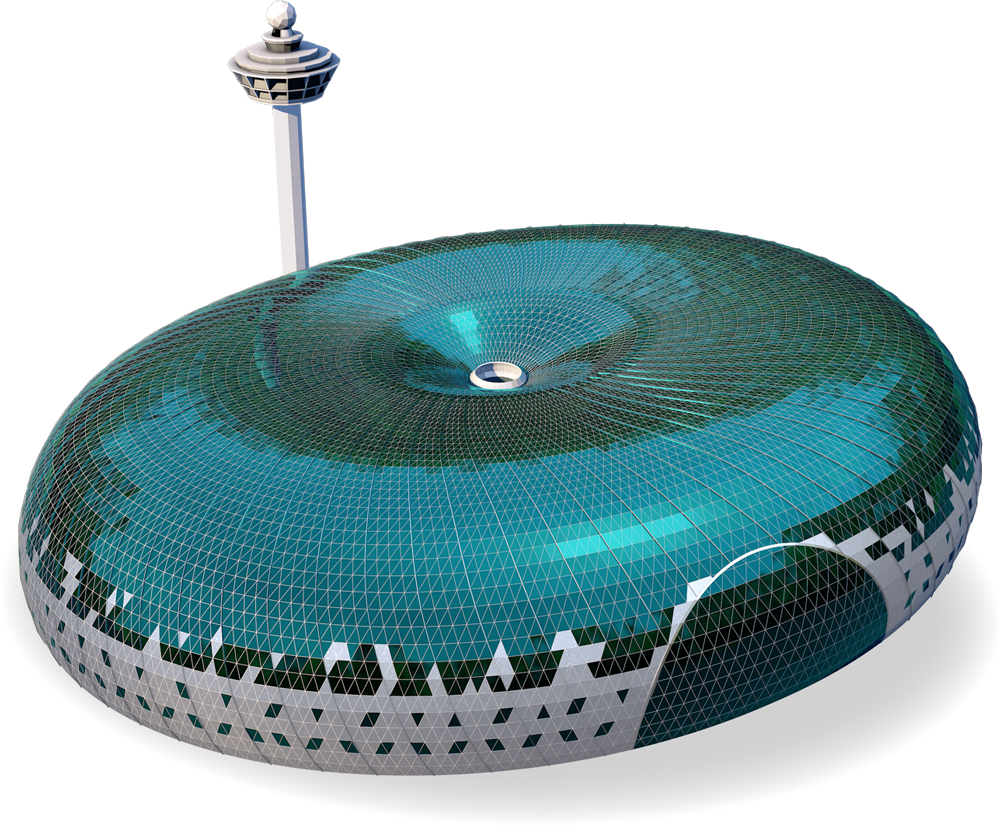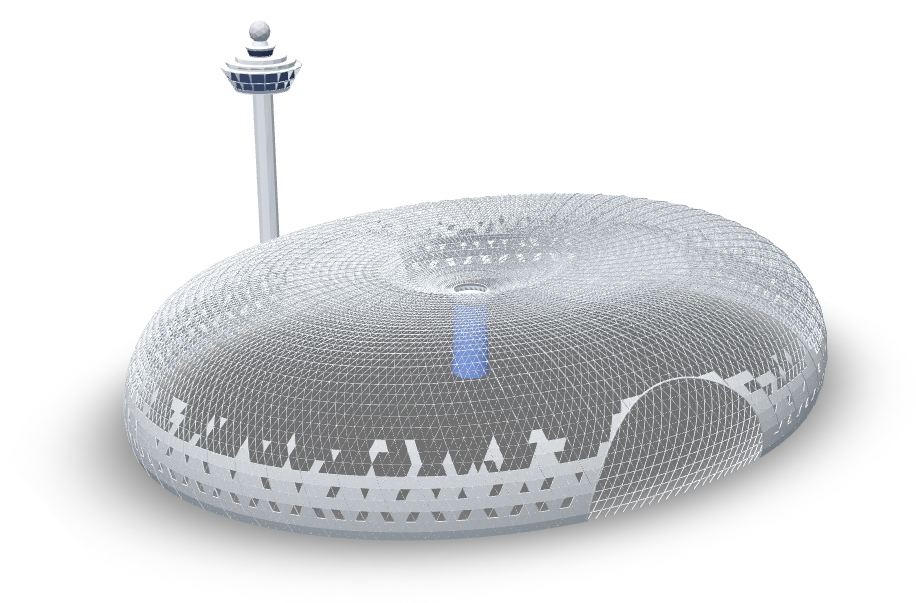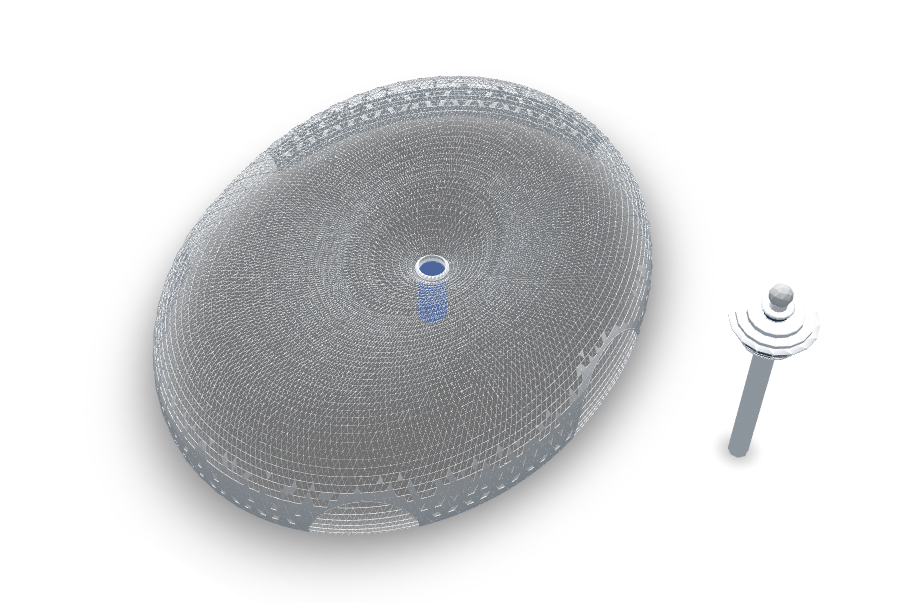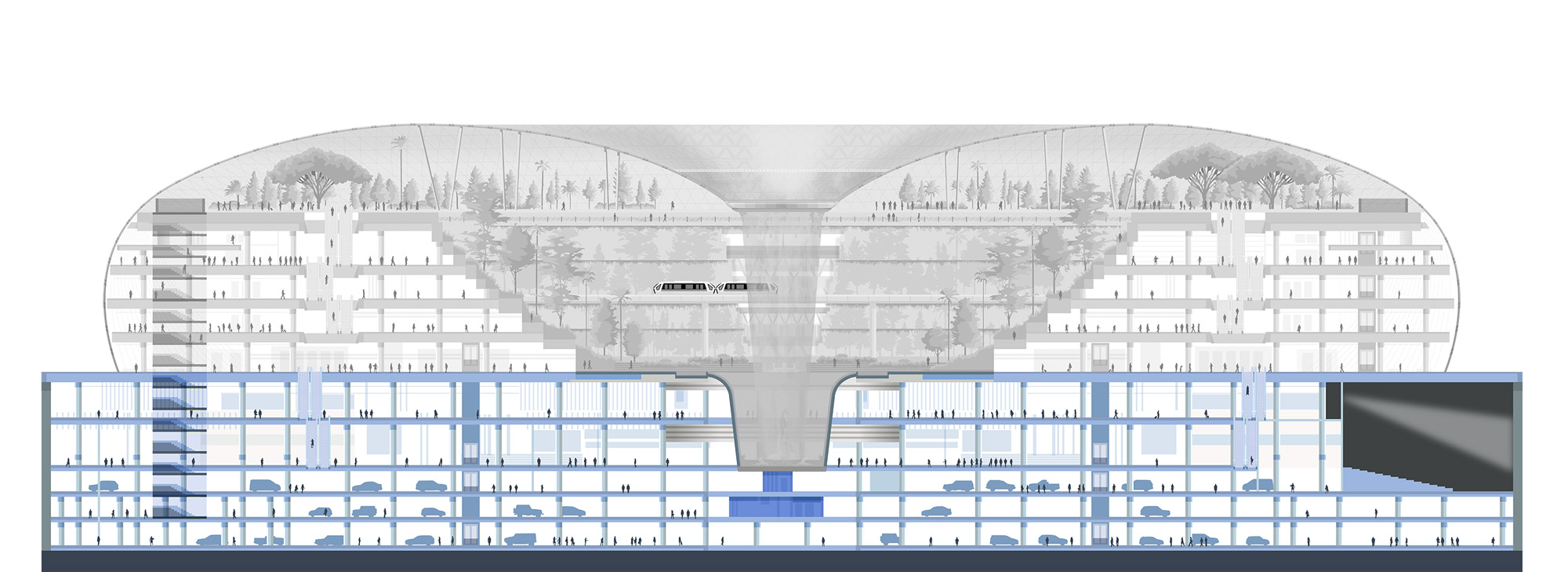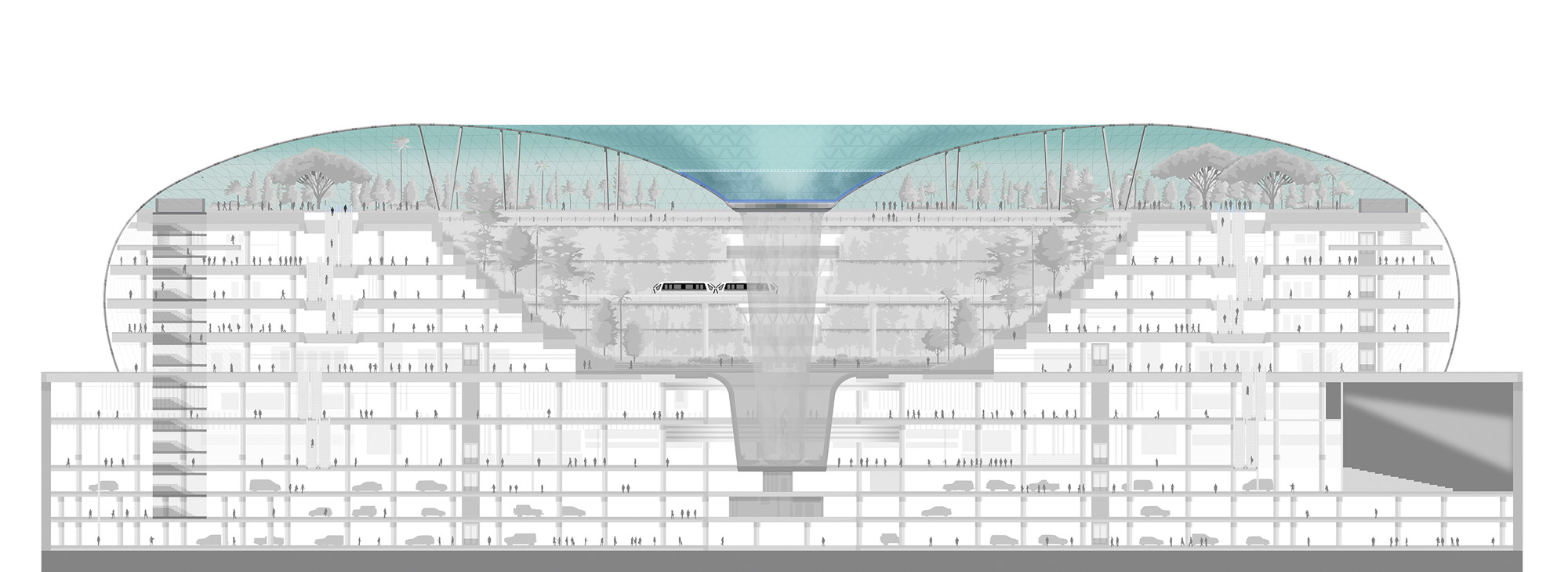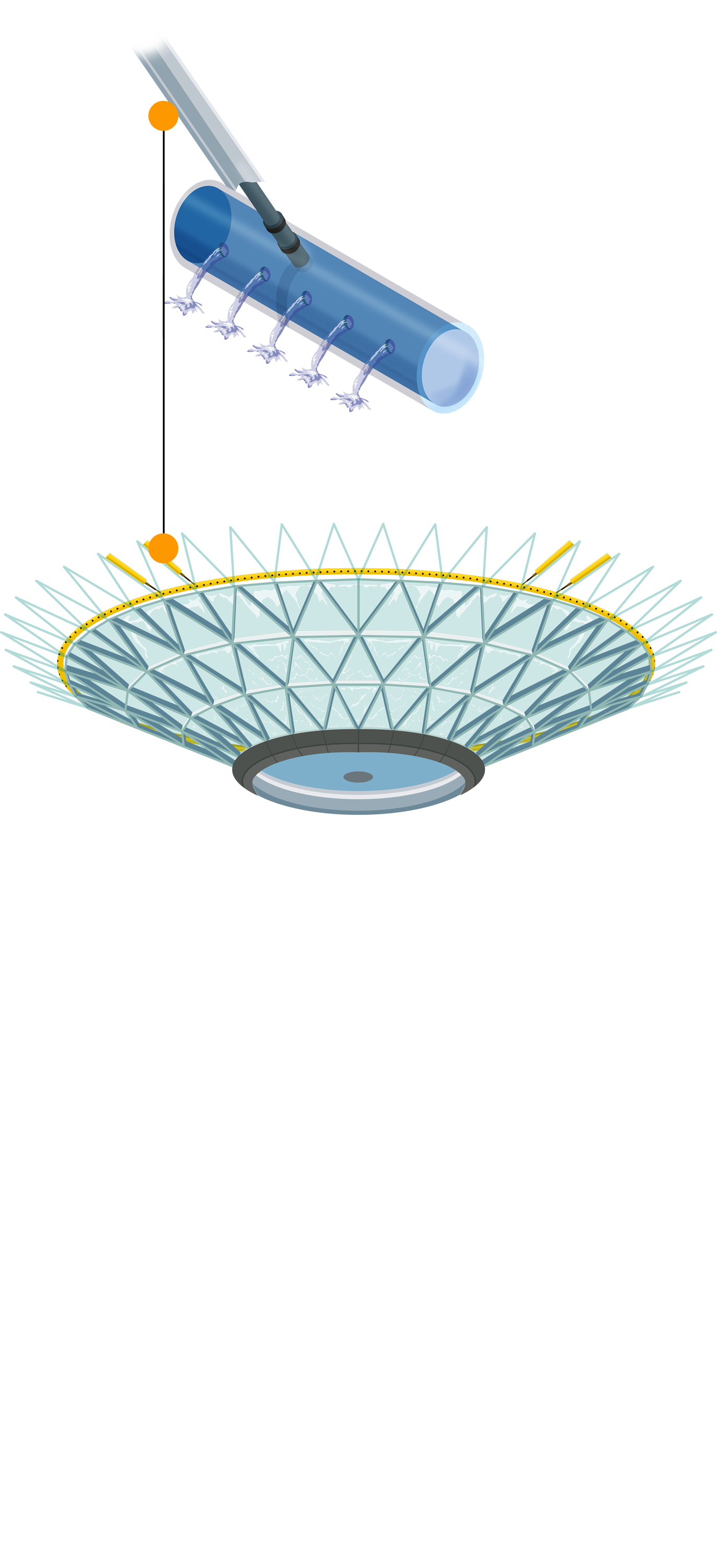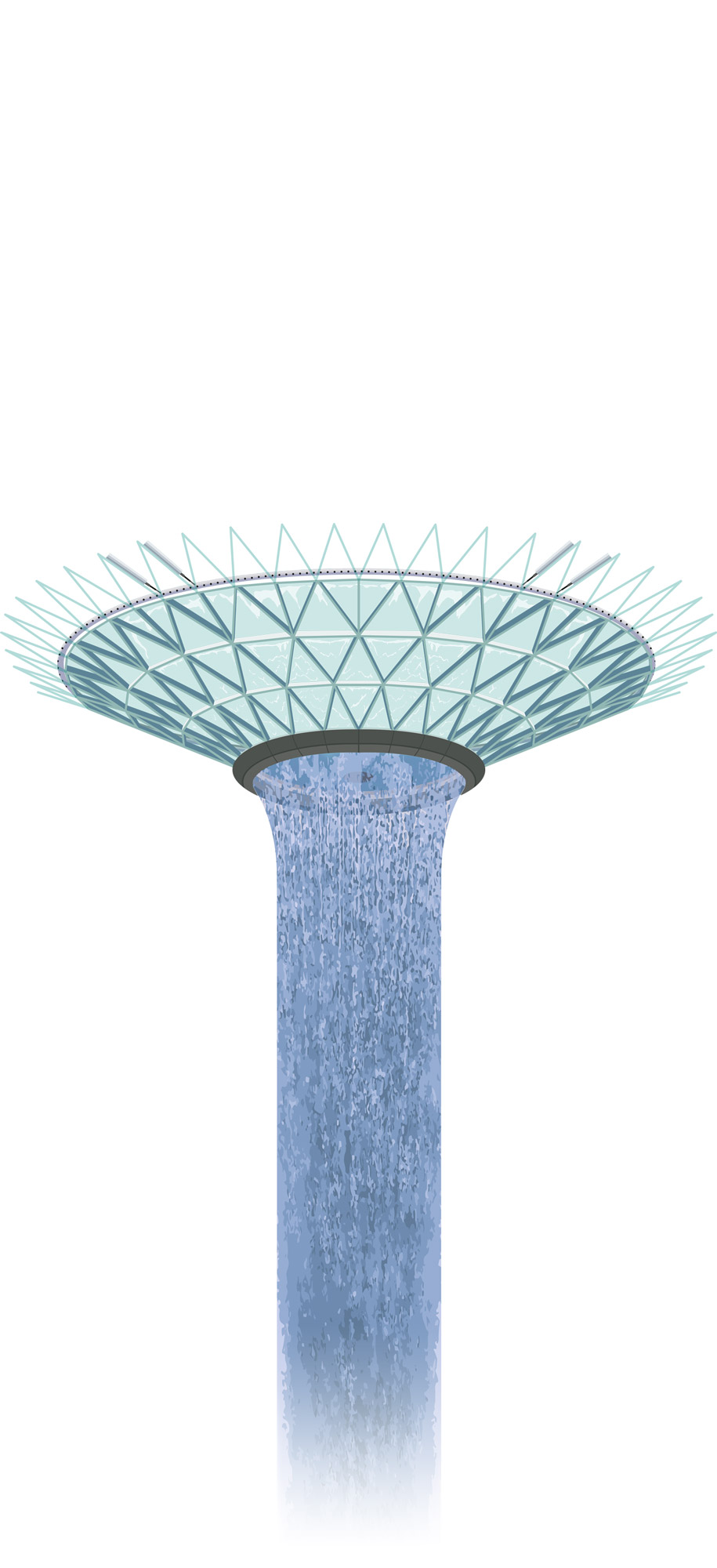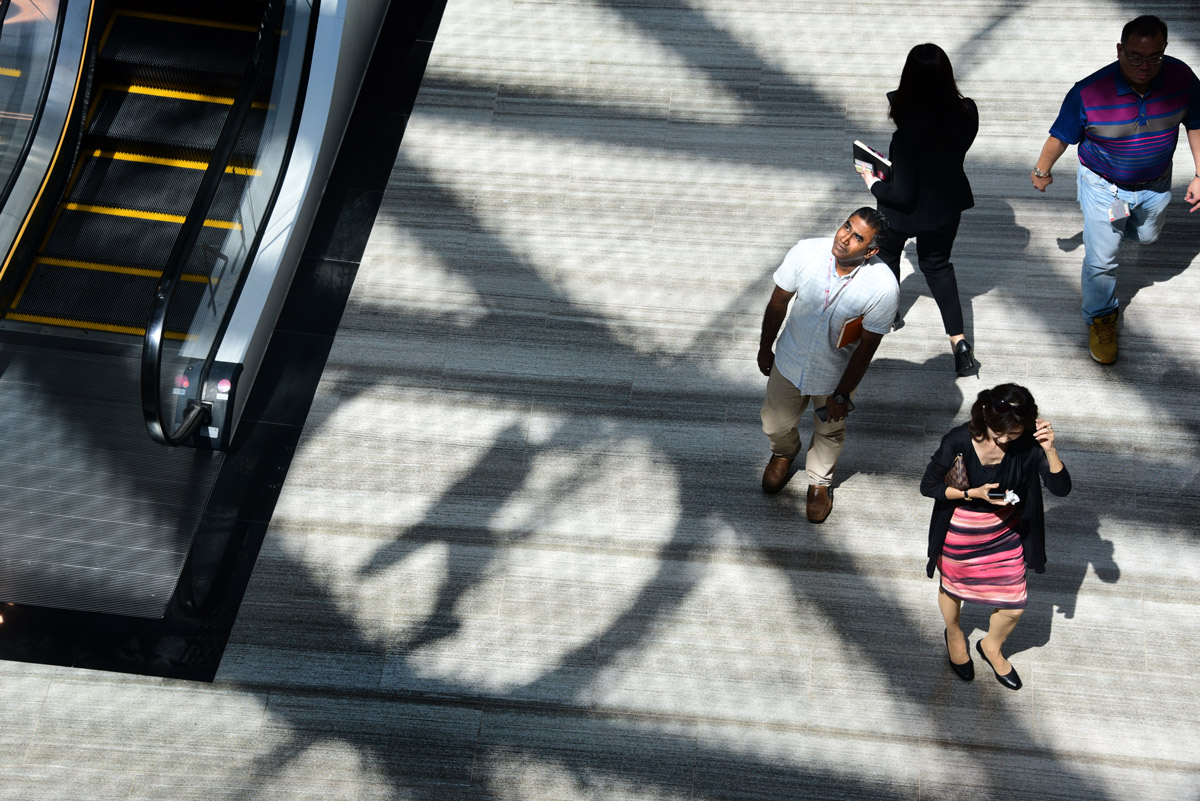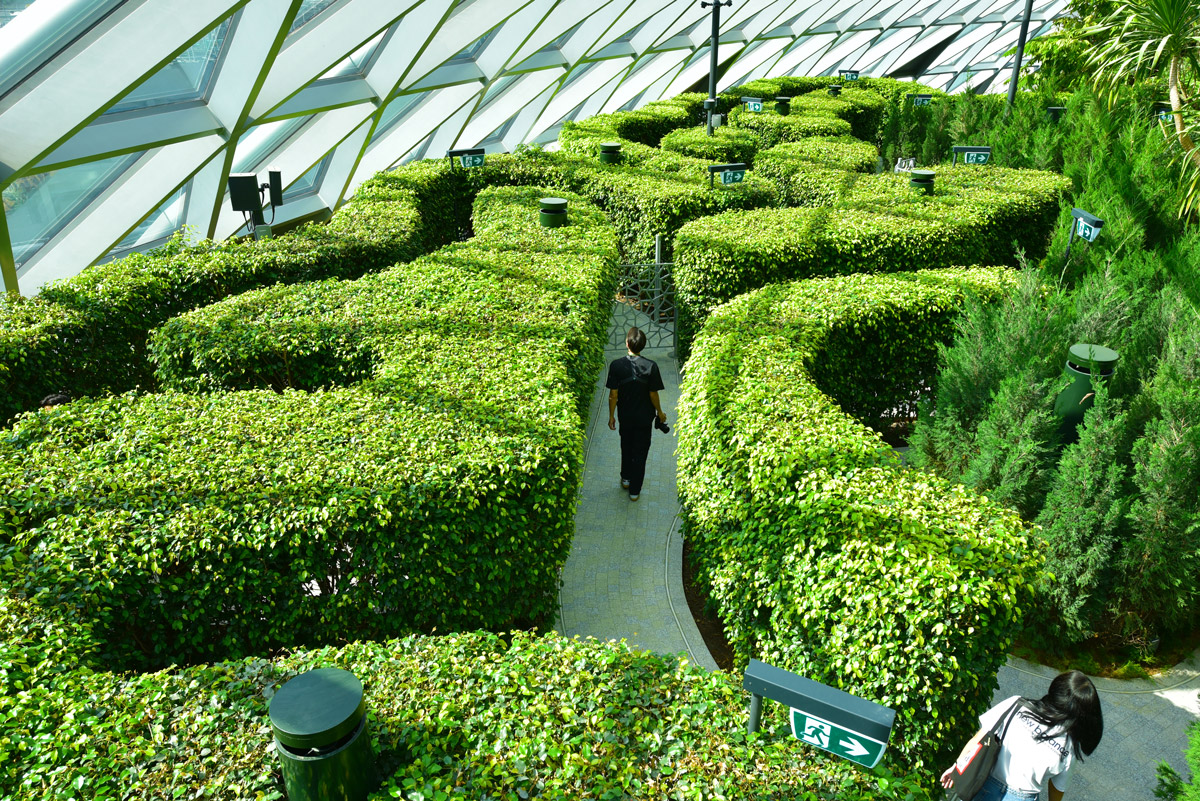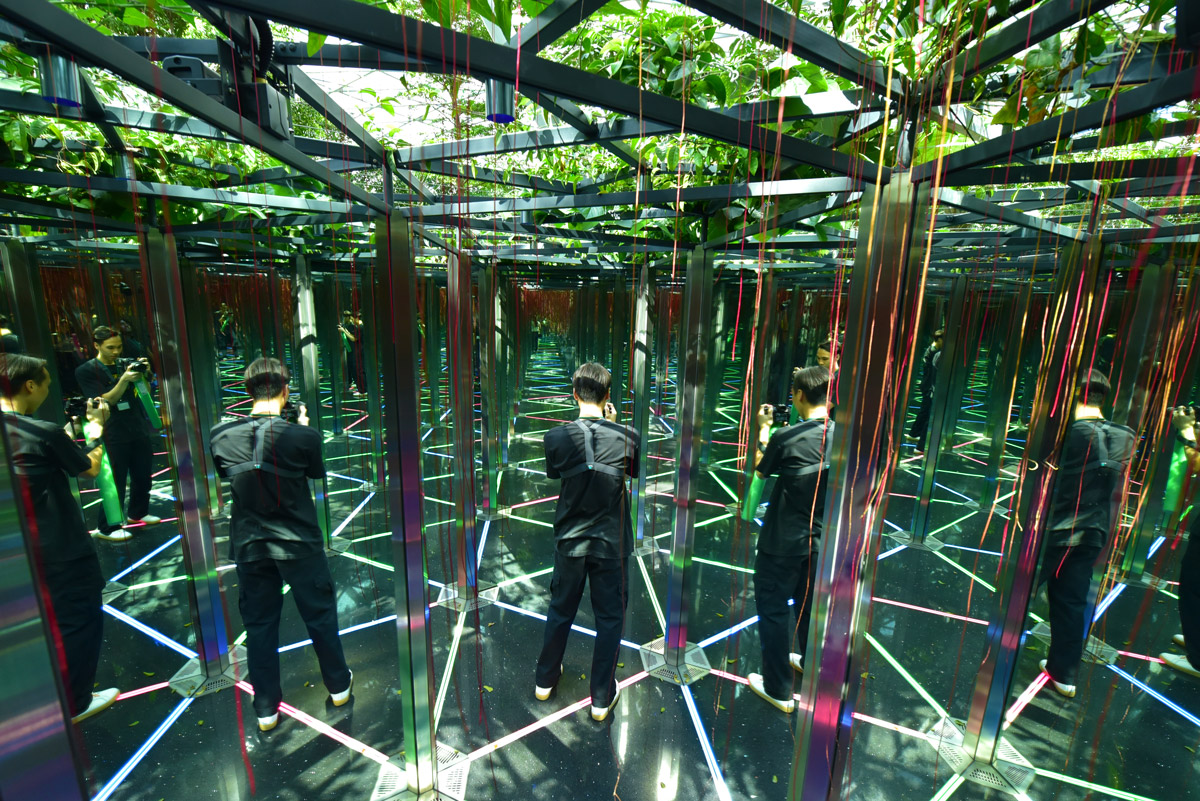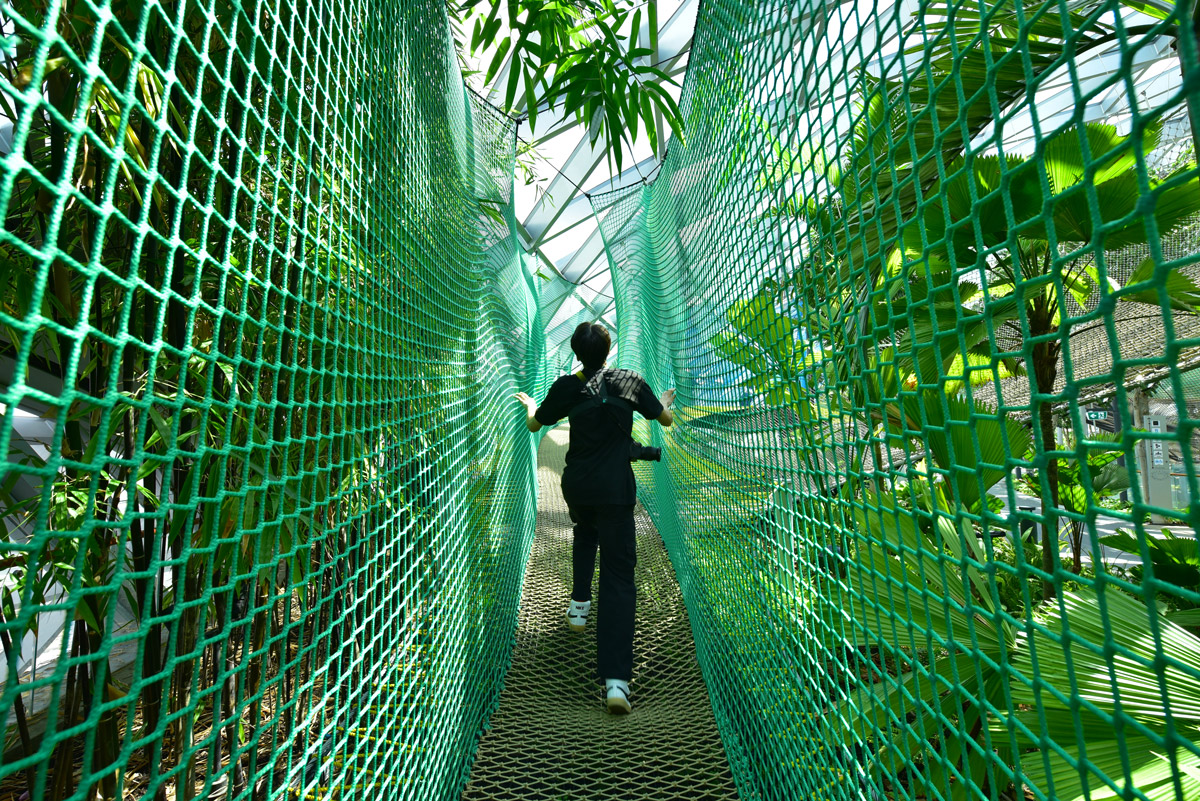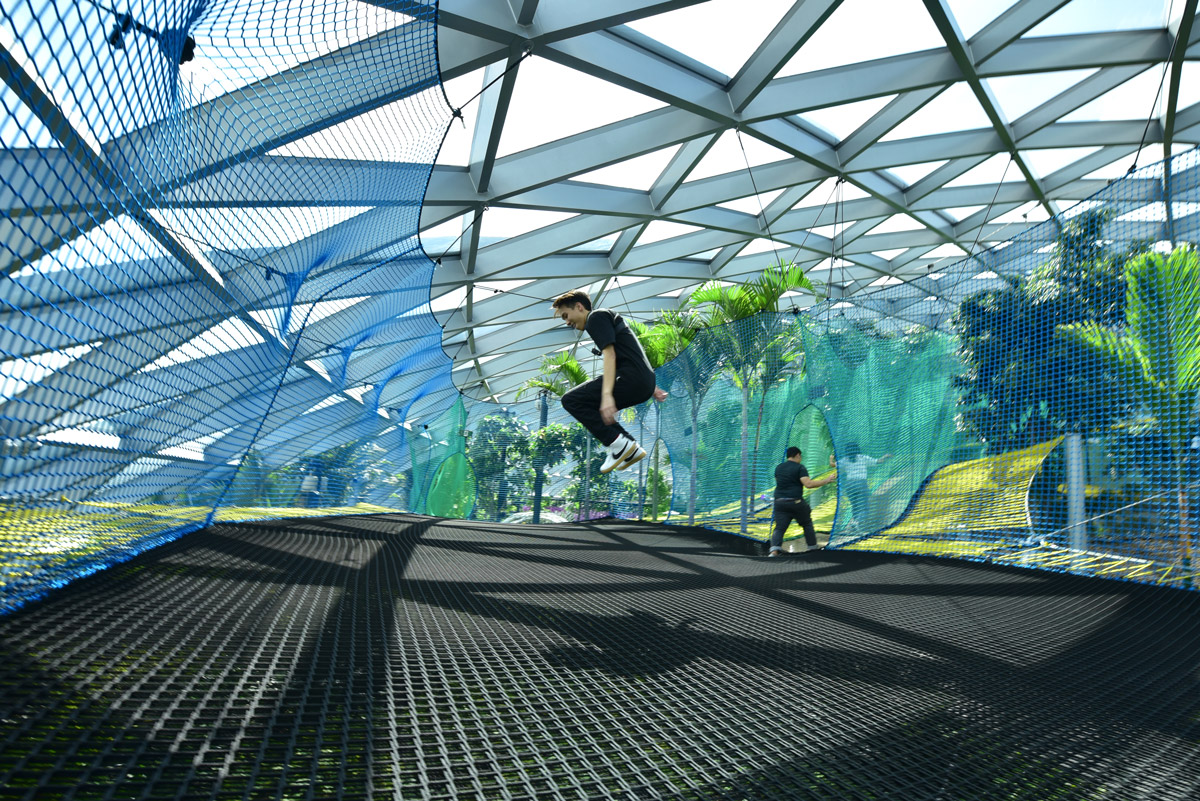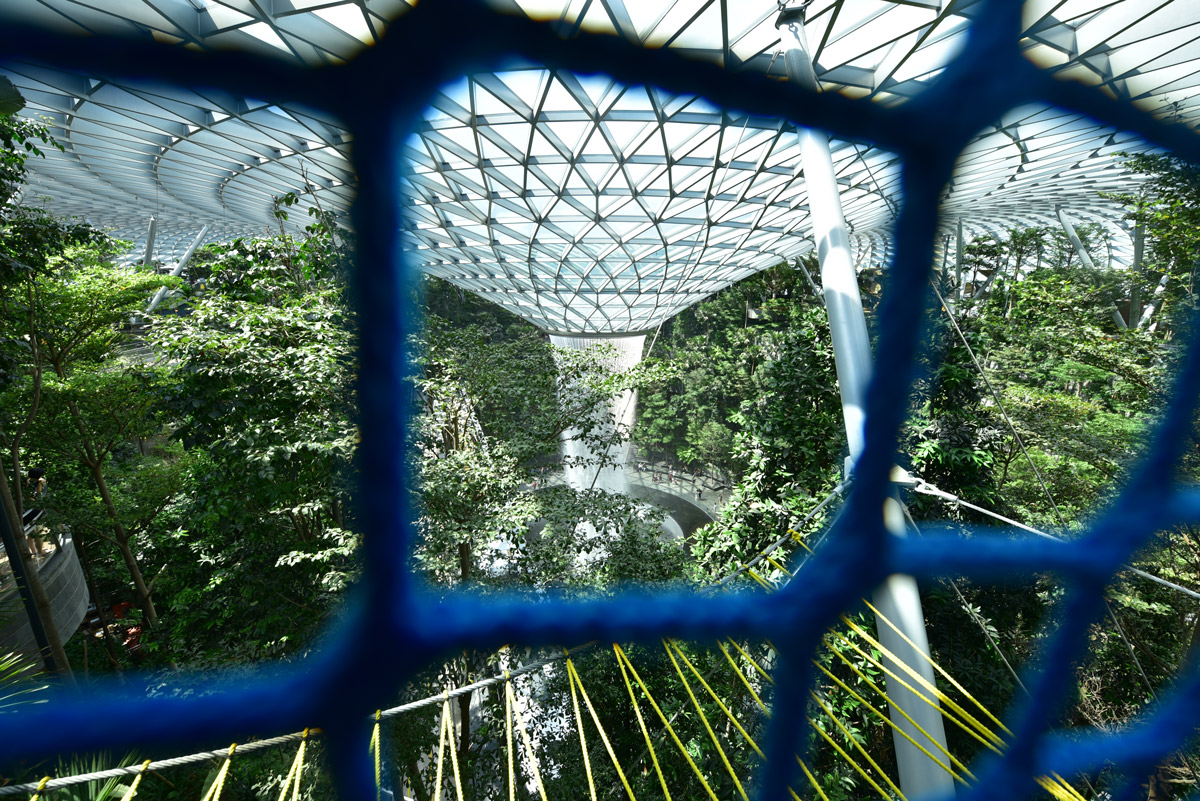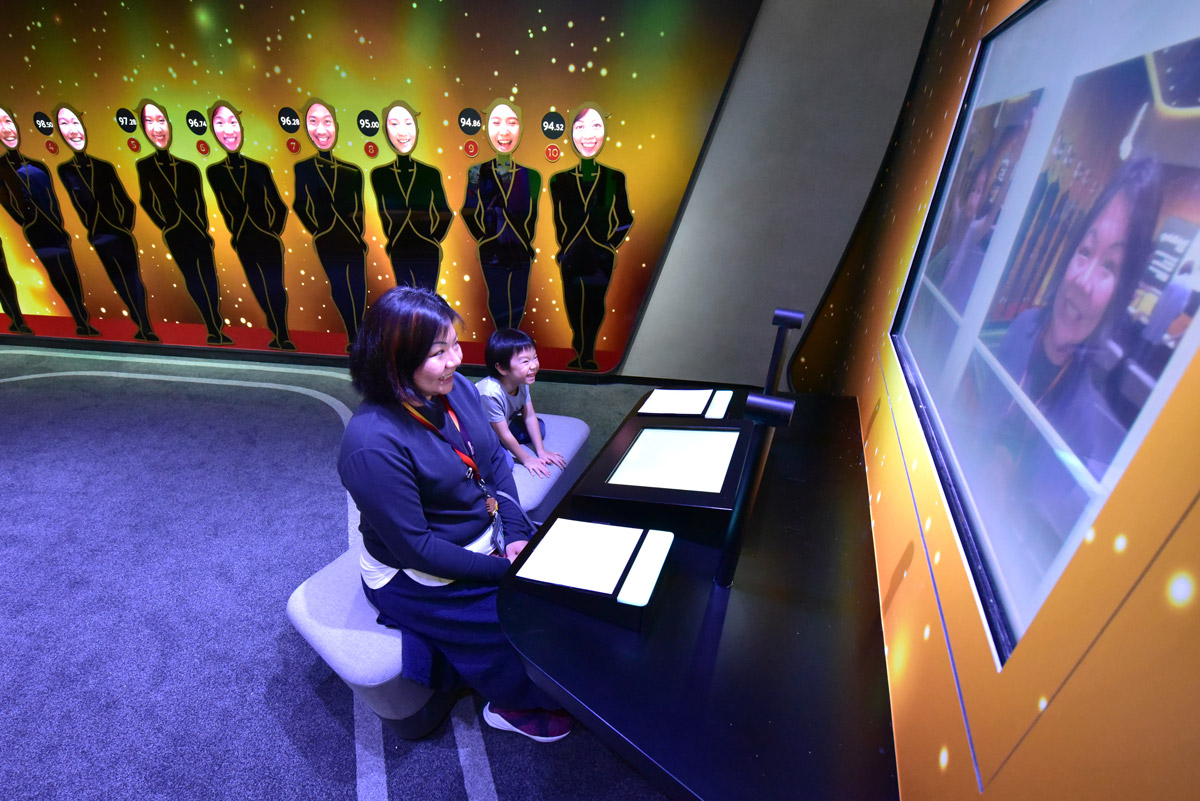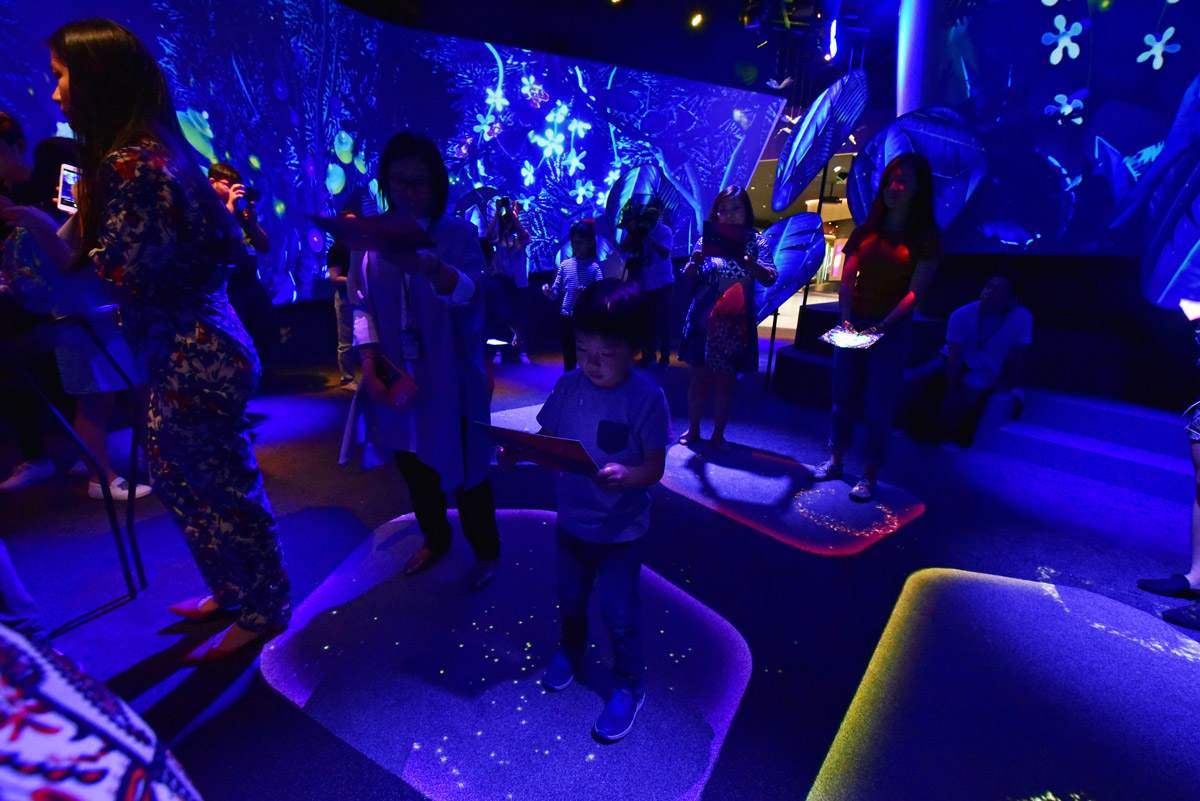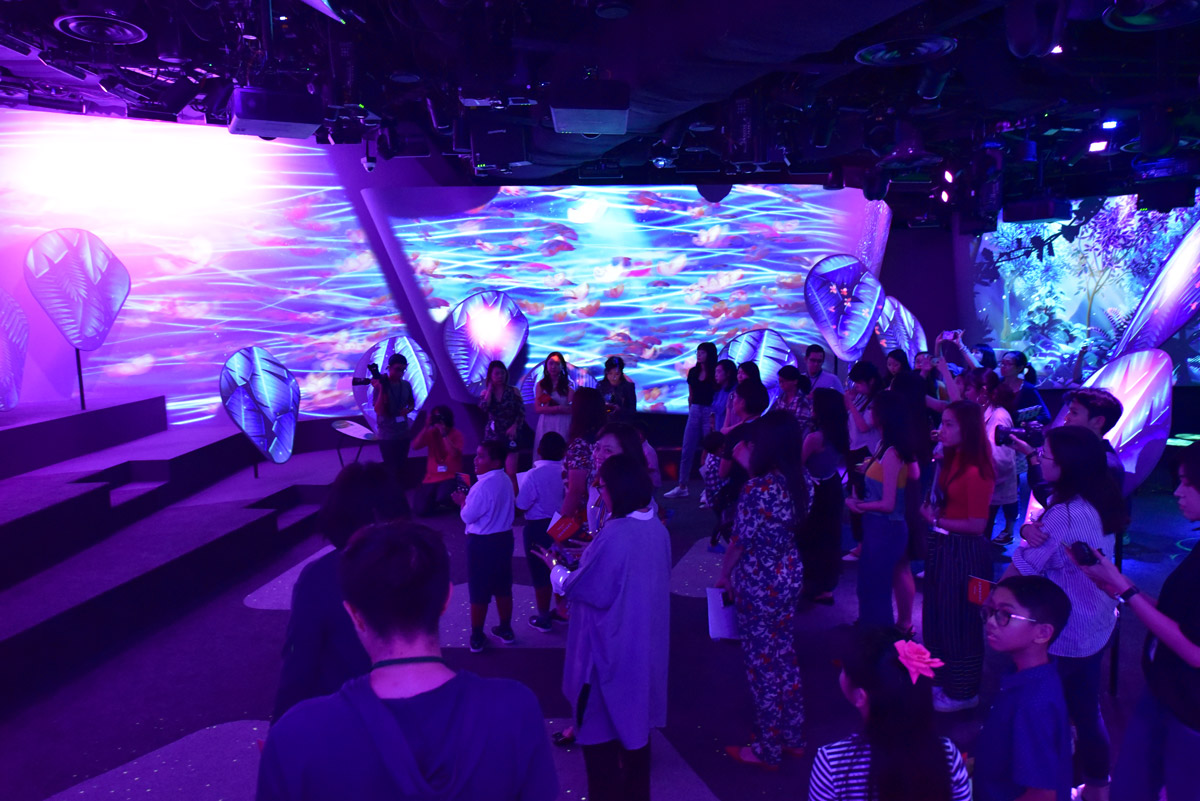Over the next five years, Jewel took shape, right in the heart of Changi Airport aerodrome, without disrupting vital operations, services, traffic or infrastructure around it.
Workers dug five storeys deep - the deepest basements in the whole of Changi Airport.
A massive canopy rose over it, formed with more than 9,000 slabs of glass, no two of them alike.
The world's tallest indoor waterfall was engineered, with tens of thousands of litres of water cascading over seven storeys.
And finally, the air-conditioned terraces were lined with thousands of trees, plants, ferns and shrubs brought in from around the world.
This is where the waterfall begins.
As much as 37,850 litres of water flows through the oculus every minute,
tumbling 40m from the oculus,
through ground level,
and to the bottom of basement 2.
"If the water had hit the main valley floor, we would all be wet now," Safdie says.
Jewel Changi Airport: FAQ
HOW TALL IS JEWEL CHANGI AIRPORT?
The glass dome of Jewel is 37.08m high.
It would have been taller, had it not been for the height limitation. "We had to stay below the radar," Safdie quips. "There’s a very specific line of the (control tower) radar we could not exceed."
He reflects that the height limitation was probably the toughest one for the team. "We could have used more height to get more curvature into the dome," he says.
"The dome is quite flat because of that."
HOW BIG IS JEWEL’S ROOF?
Jewel’s roof facade is 200 metres long and 150 metres wide.
HOW HEAVY IS IT?
The roof weighs 3,500 tonnes, equivalent to six Airbus A380 planes.

HOW TALL IS THE WATERFALL?
The waterfall is 40m tall - taller than the building itself, because the waterfall extends into basement 2.
HOW MUCH WATER FLOWS THROUGH THE WATERFALL?
During the day, the water flows at about 37,850 litres per minute, which is known as the "high flow", Alva says.
In the evening, during the light and sound show, the flow is reduced to about 5,680-7,570 litres per minute so that the light projections can be seen more clearly.
HOW IS THE WATERFALL CONTROLLED?
The nerve centre for the Rain Vortex is locked behind a nondescript door in the basement 3 car park.
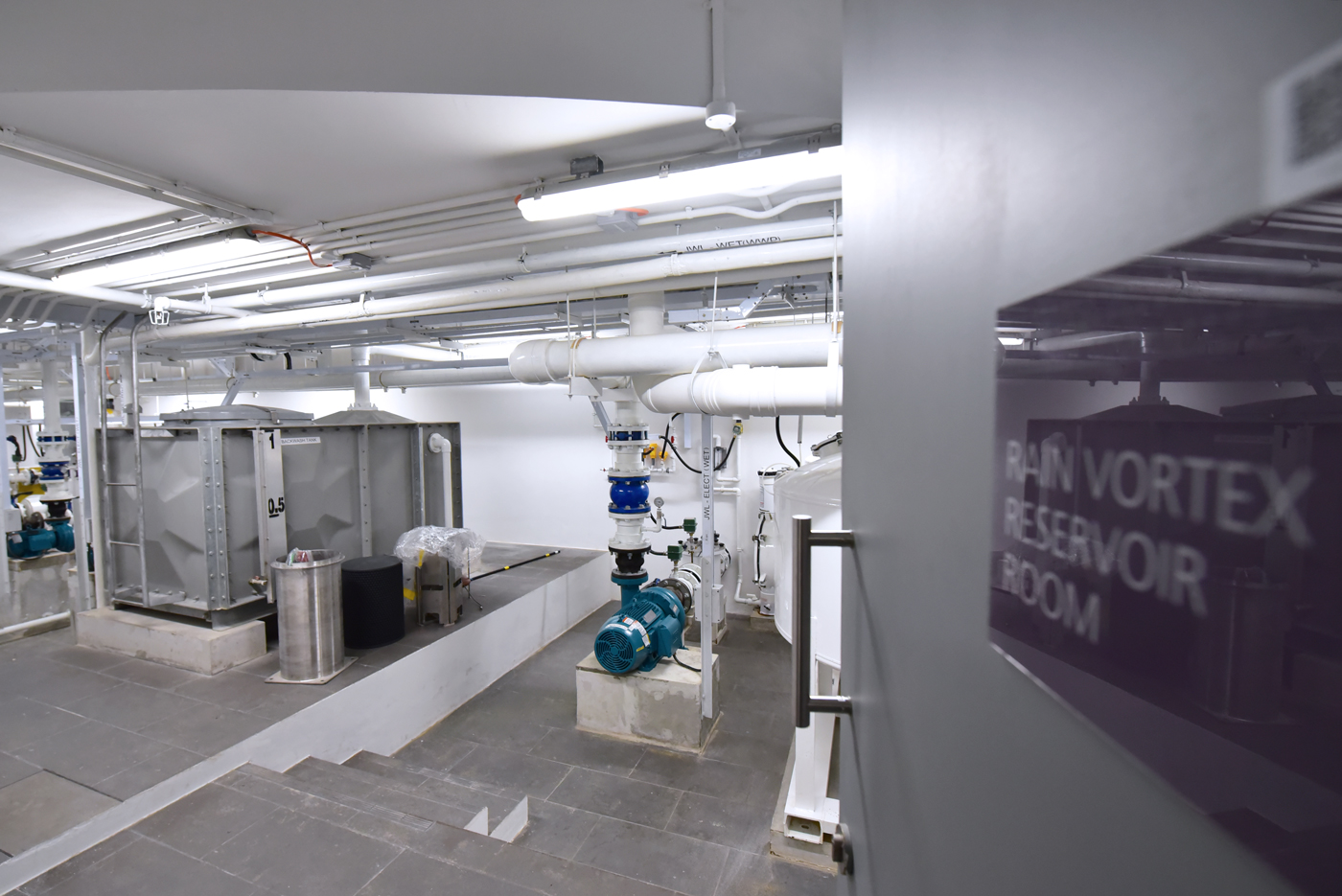
"This is the heart of the operations of the water feature," Alva says. "This is where we have our filters, our control panels, all the various mechanisms that control the water feature."
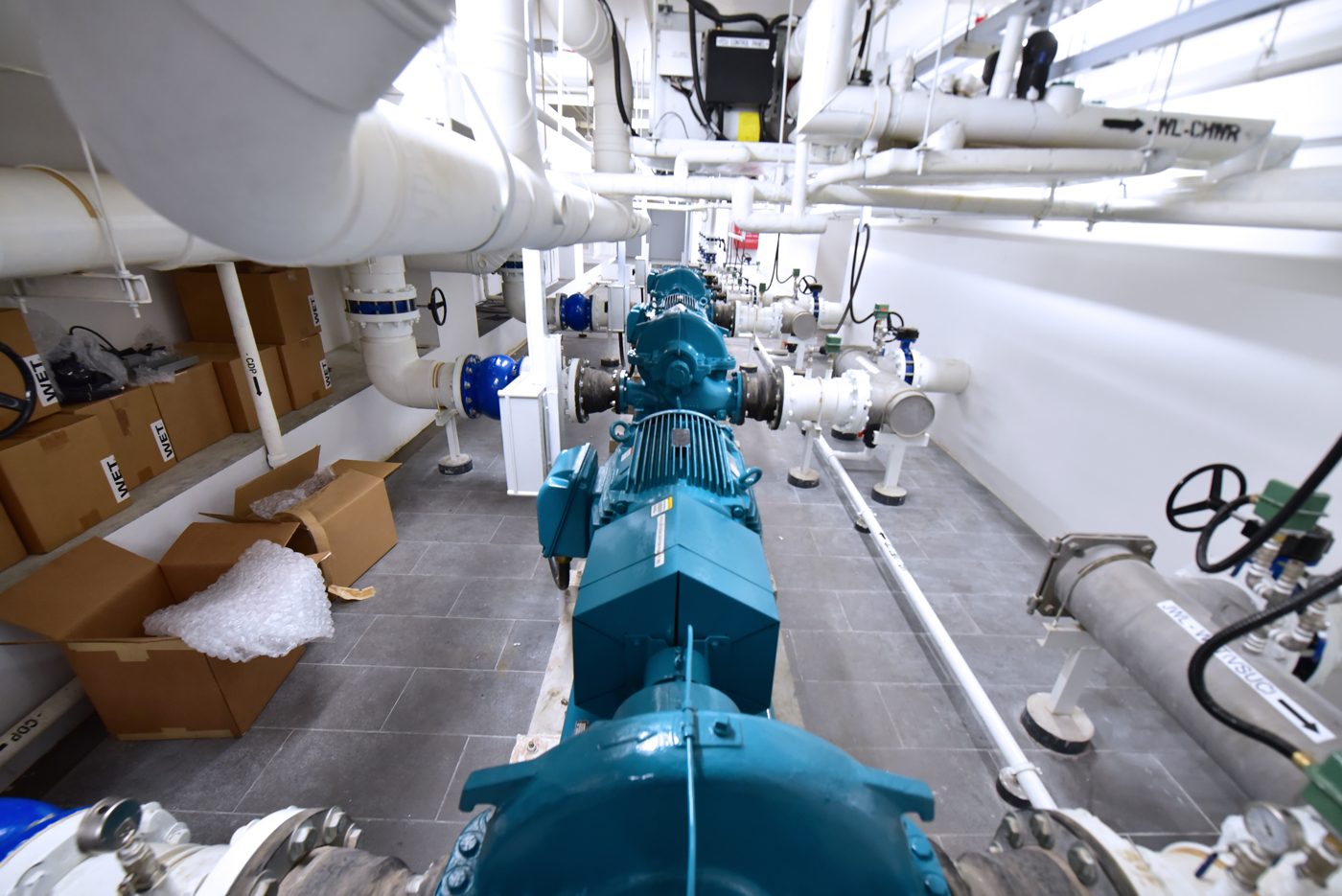
HOW BIG ARE THE RAIN VORTEX WATER TANKS?
The main tank at basement 3 has a capacity of 420 cubic metres.
Beneath it, in basement 4, lies a much larger tank of 1,670 cubic metres - four times the size of the main tank.
While the amount of water at basement 3 is kept constant, there is an overflow mechanism which allows excess rainwater to flow into the larger tank beneath.
HOW CLEAN IS THE WATER?
Basement 3 is also where the water is filtered.
A brominator is used to add bromine to the water. "As with all water tanks and systems, it’s about algae formation that we’re trying to avoid," says Jeremy Yeo, head of user experience at Jewel Changi.
"We want to make sure that the water that is getting pumped up is very clean and pure," Alva says.
WHAT HAPPENS WHEN IT RAINS?
The building has rain sensors, says Alva. When triggered, the water feature will shut off and when the rain is heavy enough, it flows into the basement 3 tank.
WHAT HAPPENS WHEN THERE IS TOO MUCH WATER?
When the tanks are full, excess rainwater is used for irrigation or diverted for other uses.
WHAT HAPPENS WHEN THERE ISN’T ENOUGH WATER?
If the required water level is reduced due to evaporation, it is topped up using NEWater.
KEY FIGURES
GROSS FLOOR AREA:
135,700sqm
FULL SITE AREA (SPECIFIC TO JEWEL):
38,500sqm
NUMBER OF STOREYS:
10 (five above ground and five basement storeys)
FACILITIES FOR AIRPORT OPERATIONS:
19,400sqm
INDOOR GARDENS AND ATTRACTIONS:
21,100sqm
RETAIL:
90,000sqm (NLA: 53,600sqm)
HOTEL:
5,200sqm (for 130 rooms)
KEY FIGURES
CAR PARK:
2,500 lots
CHARGES:
Short-term parking (B2M and B2):
S$0.04/min for first 90 mins;
S$5/30 mins for subsequent 30 mins or part thereof
GENERAL PARKING (B3 TO B5):
S$0.04/min
OVERALL PROJECT COST:
S$1.7b, including land, construction and related costs and financing
CREDITS
VISUAL JOURNALISTS
Gaya Chandramohan, Jeremy Long, Marcus Mark Ramos
INTERACTIVE CODER
Calvin Chia
3D ARTIST
Jonathan Lijauco Gomez
GRAPHICS AND LAYOUT
Kenneth Choy
PRODUCERS
Diane Leow, Elizabeth Khor, Saiful Adli Haris
EXECUTIVE PRODUCER
Chung Lyn-Yi
